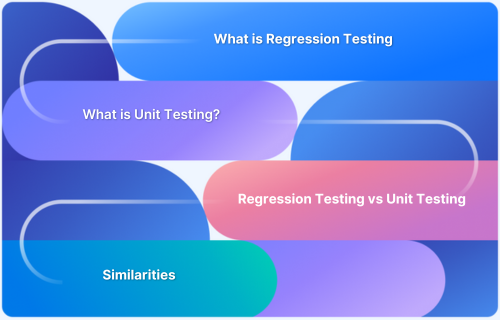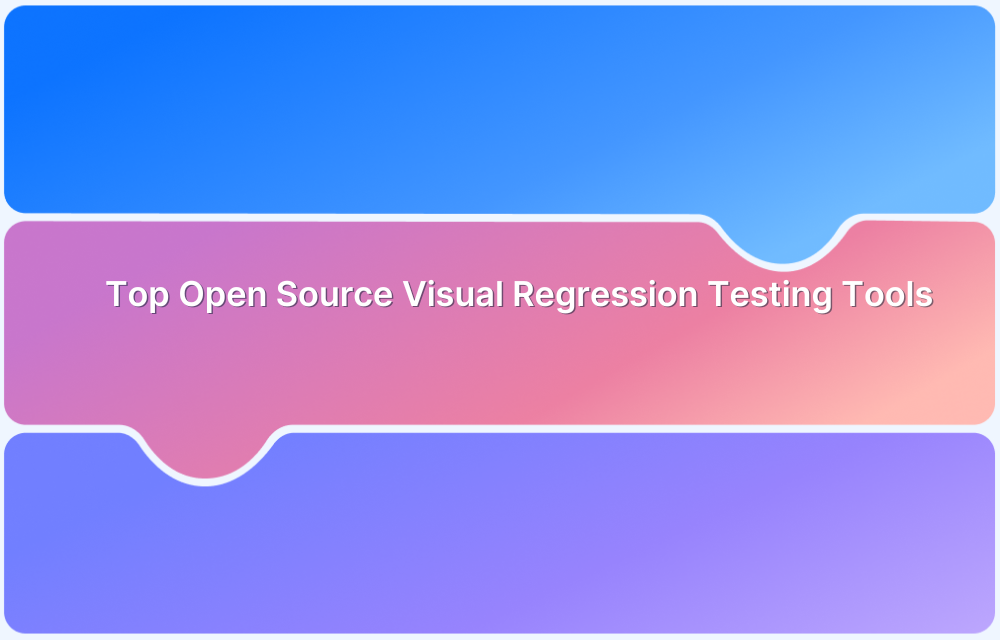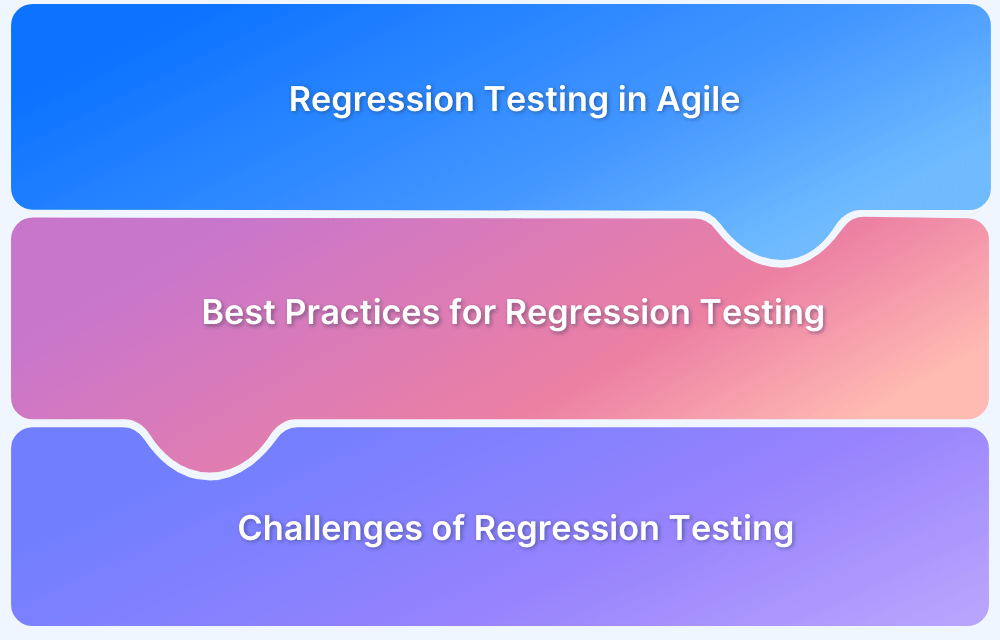Are inefficient regression tests slowing down your CI/CD pipeline? As development teams adopt CI/CD to accelerate software delivery, the pressure to maintain quality while increasing release frequency grows.
Yet, regression testing—the process of ensuring new code doesn’t break existing functionality—often becomes a bottleneck. According to recent research, 55% of teams struggle with flaky, unreliable tests that slow down deployment cycles.
The challenge lies in balancing test speed with thoroughness, managing growing test suites, and addressing integration and resource constraints.
Without a strategic approach to regression testing, organizations risk releasing unstable code, extending deployment cycles, and undermining the agility that CI/CD promises.
This article explores the role of regression testing, common pain points, and strategies like Shift-Left Testing, along with best practices for automating and scaling regression tests in CI/CD environments.
The Role of Regression Testing in CI/CD Pipelines
Regression testing ensures that new code changes—whether bug fixes, new features, or updates—do not introduce unintended side effects that affect the stability of existing functionality. In CI/CD pipelines, this testing is automated to maintain speed and reliability in the development cycle.
In a CI/CD context, regression testing is typically triggered automatically as part of the pipeline whenever code changes are committed. Its role extends beyond simple bug fixing to include:
- Ensuring consistency across releases: New features should integrate seamlessly with the application, and regression tests help verify this.
- Accelerating feedback: Immediate feedback through automated regression testing helps developers identify issues quickly, reducing the time to fix bugs.
- Quality assurance: Continuous regression testing reduces the risk of defects slipping through the cracks into production.
Without proper regression testing in CI/CD, teams risk releasing buggy code, leading to production failures, customer dissatisfaction, and costly downtimes.
Common Regression Testing Pain Challenges and How to Overcome Them
Despite its importance, regression testing in CI/CD pipelines is not without challenges. These challenges can range from slow execution times to complex integration requirements. Below are some common regression testing pain points, along with strategies to overcome them:
1. Slow Test Execution Times
As the test suite grows, execution times can increase significantly, slowing down the feedback loop.
- Solution: Use parallel test execution to run multiple tests simultaneously across different environments. Tools like BrowserStack Automate allow teams to execute tests on multiple browsers and devices in parallel, significantly reducing test cycle times.
- Tip: Focus on critical test scenarios first by implementing risk-based test prioritization to identify and run only high-impact tests when possible.
2. Flaky Test Cases
Test flakiness is a common issue in CI/CD pipelines, where tests fail intermittently due to unstable environments, network issues, or improper test design.
- Solution: Investigate the root causes of flakiness—whether it’s due to environment issues or poor test case design—and address them by creating more reliable, deterministic tests. Using containerized or virtualized environments (e.g., Docker) can help stabilize test environments.
- Tip: Retry logic can be applied to flaky tests, but it’s crucial to track these failures and resolve the underlying instability to prevent recurring issues.
3. Overwhelming Test Suite Maintenance
With the rapid pace of development, it can be challenging to keep the regression test suite up-to-date, especially when code changes frequently.
- Solution: Adopt a modular approach to testing. Break the test suite into smaller, reusable test cases that are easier to maintain and scale. Regularly refactor and update tests to ensure they remain relevant to the current codebase.
4. Integration with Development Tools
CI/CD tools need to integrate seamlessly with testing tools, version control systems, and deployment tools, which can sometimes present integration challenges.
- Solution: Choose testing tools that integrate well with your existing CI/CD platform. For instance, BrowserStack Automate integrates easily with CI/CD tools like Jenkins, GitLab CI, and CircleCI, ensuring smooth testing workflows across different stages of the pipeline.
Shift-Left Testing Strategy in CI/CD
Shift-left testing is a software testing strategy that emphasizes the importance of testing early in the development process. By shifting testing activities to earlier stages—such as the requirements, design, and coding phases—teams can identify defects before they become costly to fix.
In CI/CD pipelines, this means that testing isn’t just left to the end of the process. Regression tests should be executed alongside the build and development stages to catch issues before they are pushed into staging or production.
Benefits of Shift-Left Testing:
- Faster defect detection: Catching issues early means they are easier and cheaper to fix.
- Reduced bottlenecks: By testing early, issues can be resolved without waiting for the end of the development cycle.
- Improved collaboration: Developers, testers, and operations teams can collaborate early to define tests, ensuring the pipeline remains smooth.
How to Implement Shift-Left Testing:
- Test early in the process: Ensure automated regression tests are part of the development workflow, running on every pull request or commit.
- Collaborate across teams: Developers, testers, and product managers should work together to define test scenarios and ensure comprehensive coverage.
- Automate wherever possible: Automate as much testing as possible to get continuous feedback in real time.
Read More: Regression Testing in Agile: Getting Started
Dealing with Flaky Test Cases in CI/CD
Flaky test cases are one of the most persistent issues in CI/CD pipelines. These tests intermittently fail even though there is no change in the application code, often due to environmental inconsistencies or external factors like network instability.
How to Handle Flaky Tests:
- Root Cause Analysis: Investigate why the tests are failing—whether it’s due to test design, unreliable dependencies, or environment instability.
- Use Reliable Test Data: Ensure that tests use fixed, deterministic data sets. Avoid depending on live data or external systems that may change or become unavailable.
- Isolate Tests: Make sure tests are independent and not reliant on the order of execution. A failed test should not affect others.
Tools to Help Manage Flaky Tests:
- Retry Mechanisms: Implementing automatic retries for flaky tests can reduce false negatives in the pipeline, but ensure you’re fixing the root cause of flakiness in the long run.
- Containerization: Using containers like Docker can help create consistent and reproducible test environments, reducing the chance of environmental issues causing flaky tests.
Best Practices for Efficient Regression Testing in CI/CD
To ensure regression testing in CI/CD is efficient and effective, it’s essential to follow best practices:
- Prioritize Tests: Use a risk-based approach to prioritize critical tests. Start with high-priority tests and only run less critical tests if time permits.
- Test in Parallel: Run tests on multiple devices and browsers simultaneously using cloud-based services like BrowserStack Automate. This helps speed up testing and increases coverage.
- Maintain a Modular Test Suite: Keep your regression suite modular so that it’s easier to manage, update, and scale.
- Regularly Refactor Tests: As the codebase evolves, so should the tests. Regularly refactor the test suite to remove redundant tests and ensure it reflects the current state of the application.
- Integrate with CI/CD Tools: Ensure your regression tests are fully integrated with your CI/CD tools so that they automatically run during each build or deployment cycle.
To ensure seamless integration, it’s essential to have the right strategy in place. If you’re facing challenges with automation or tool integrations, our experts can provide the guidance you need to optimize your processes and achieve smoother, faster releases.
Get Expert QA Guidance Today
Schedule a call with BrowserStack QA specialists to discuss your testing challenges, automation strategies, and tool integrations. Gain actionable insights tailored to your projects and ensure faster, more reliable software delivery.
Automating Regression Tests in CI/CD Pipelines
Automation is key to scaling regression testing in CI/CD pipelines. Automating the entire regression testing process reduces manual effort, speeds up testing cycles, and ensures consistency.
How to Automate Regression Testing?
- Leverage CI/CD Integration: Use platforms like Jenkins, GitLab CI, or CircleCI to trigger automated regression tests during the build process.
- Use Cloud-based Testing: Tools like BrowserStack Automate allow you to automate testing across thousands of real devices and browsers without managing infrastructure, ensuring a reliable testing environment.
- Run Regression Tests with Every Commit: Set up your CI/CD pipeline to trigger regression tests automatically whenever new code is pushed, ensuring immediate feedback.
Automation reduces the testing overhead, accelerates feedback loops, and improves software quality by ensuring that issues are caught early.
Why choose BrowserStack for Regression Testing?
BrowserStack Automate is an ideal solution for automating regression tests in CI/CD pipelines. It provides access to over 3,500 real devices and browsers, enabling testing across a wide range of environments. With its powerful integration capabilities, BrowserStack Automate easily integrates into your CI/CD pipeline, running tests in parallel and delivering fast, reliable feedback.
Key Features of BrowserStack Automate:
- Real Device Cloud: Test on real devices, ensuring accurate and reliable results without managing physical devices.
- Parallel Testing: Run multiple tests simultaneously across different browsers and devices, reducing testing time significantly.
- CI/CD Integration: Easily integrate with popular CI/CD tools like Jenkins, GitHub Actions, CircleCI, and GitLab CI for automated regression testing.
- Cross-Browser Testing: Ensure your application functions well across various browsers and browser versions, improving overall quality.
- Instant Feedback: Receive immediate test results and detailed logs, helping your team quickly identify and fix issues.
By incorporating BrowserStack Automate into your CI/CD pipeline, you can ensure fast, scalable, and accurate regression testing, accelerating development cycles and improving software quality.
Conclusion
Regression testing is a critical component of CI/CD pipelines, ensuring that new code changes don’t negatively impact existing functionality. However, challenges like flaky tests, slow execution times, and test suite maintenance require proactive solutions.
By implementing Shift-Left Testing, automating tests, and following best practices, teams can build a robust and efficient regression testing framework. Leveraging platforms like BrowserStack Automate for parallel testing and CI/CD integration ensures fast, reliable feedback, accelerating software delivery without compromising quality.







